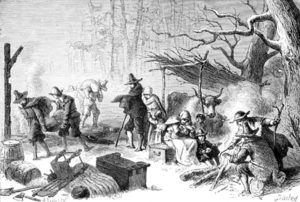
West Haven’s Earliest Days
Part II
See part 1 here.
See part 3 here.
See part 4 here.
See part 5 here.
From the booklet “Historic West Haven,” by Lorraine Wood Rockefeller:
The earliest beginnings of West Haven are very difficult to follow as the original records are assumed to have been destroyed during the British invasion in 1779.
New Haven and Milford long disputed a purchase of land from the Indians on May 20, 1645, both claiming the purchase. New Haven, cleared and laid out the original nine squares of their city purchased from the Indians and then gave attention to the remainder of the land stretching five miles west of the Quinnipiac approximately to the Cove River and the foot of Allingtown Hill.
Land Dispute Ends in 1674
The dispute was finally settled by the State Assembly in 1674, when Oyster River was designated the town line. In 1680 the third allotment of New Haven lands included the territory from Malbon’s Cove (Cove River) “so along the sea to oister (sic) river and thence upward by Milford Line until they come at least halfe a mile above ye round hills…and thence to turn eastward and lay out unto ye Mill River.”
West Haven was then a section of land with shore flats of wild, coarse marsh grass with the sea sweeping into many tiny coves to join the fresh sweet water brooks which offered sanctuary to mink, muskrat and beaver, and the land gradually rising into thickly wooded hills. Before the arrival of the white man, the Indians had a settlement at Wigwam Neck on Wigwam Creek, not far from the location of our present Green. These untouched acres offered great promise to the newcomers.
Hard to imagine now, but true, before the early Dutch traders came to buy furs and hides at Sandy Point on the West Bank of West River, a huge shell heap had accumulated from the oyster and clam shells left by Schagticoke, Podunk and Tunxis Indians on their shore trips to feast on shellfish.
To Be Continued.